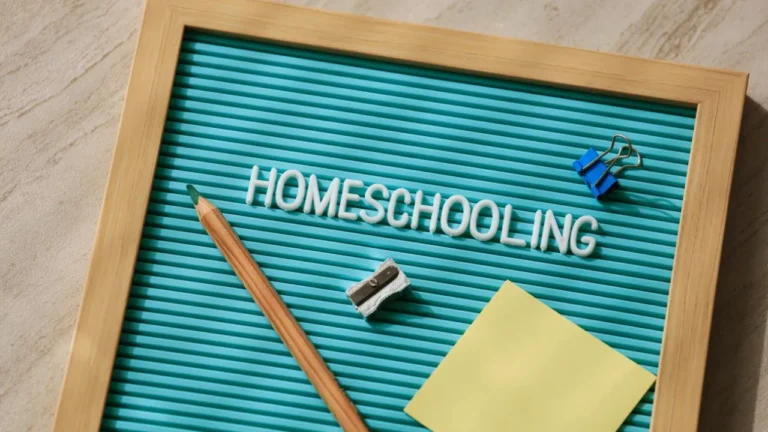The Good and Bad of School Uniforms For Students

Conversations and arguments about the need for school uniforms for students have reverberated through school hallways and classrooms for years.
Supporters of this idea highlight the potential benefits of school uniforms. Uniforms can foster a sense of unity. They can boost confidence. They also create an inclusive school atmosphere.
On the other hand, detractors raise concerns about stifling students’ self-expression through their wardrobe selections. So the question is, are school uniforms good or bad? Let’s investigate further and you decide!
Studies examining the effects of school uniforms on students often yield varied outcomes. Certain institutions have discovered distinct benefits from implementing school uniform policies, while others find little to no impact. More disconcertingly, some research suggests potential harm to students from mandatory uniform policies.
Time to delve deeper into the multifaceted aspects. Both the advantageous and challenging aspects of making uniforms a requirement for students should be considered.

Advocates for Student Safety
There’s a belief held by some that school uniforms contribute to safer learning environments. Look at Long Beach, CA, where they mandated uniforms for students from kindergarten through eighth grade. Following this policy, an impressive drop in assault and battery cases was reported, a decrease of 34%.
Even more impressively, instances of assault involving deadly weapons fell by half. Fighting occurrences slid down by 51%. Sexual offenses plummeted by 74%.
The uniform policy seemed to also affect less visible issues. Weapon possession dipped by 52%. Drug possession was reduced by 69%. Cases of vandalism declined by 18%.
Sparks Middle School, located in Nevada, noted a similar positive trend after implementing a uniform policy. Reports of gang activity, fights, graffiti, property damage, and battery all showed a decline. Police reports overall fell by a striking 63%.
Another selling point for school uniforms, according to proponents, is that they could prevent students from hiding weapons. This would stop students from concealing weapons in their clothing.
In addition, they believe that the presence of an outsider would be noticed quicker. This ensures greater safety for both students and staff in case an unauthorized person attempts school entry.

The Other Side of the Coin
Yet, school uniform policies don’t always deliver the desired outcomes. Some studies report an increase in discipline issues post-implementation. One such peer-reviewed study uncovered that the average number of assaults rose. There was an increase of approximately 14 per year in the most volatile schools.
The Miami-Dade County Public Schools Office of Education Evaluation and Management reported a startling near doubling of fights in middle schools. This was within a year of uniforms becoming a mandate.
Nurturing Education
For a multitude of students, daily attire choices can lead to a mounting burden. The lack of trendy, branded outfits might trigger a sense of insecurity, detracting from their focus on learning.
Certain proponents believe that uniforms offer a panacea, steering concentration toward education by leveling the playing field with uniform apparel. Some Australian researchers observed enhancements in discipline and scholastic performance among uniformed students.
Notably, this observation isn’t universally accepted. Indeed, certain studies suggest uniforms might not boost grades at all. Even more startling, some investigations suggest an adverse effect on student achievement due to uniforms.
Impact on Attendance
Uniforms may also play a role in shaping attendance habits. According to a University of Houston study, girls’ attendance in middle and high schools showed a mild increase of about 0.3 to 0.4 percent. This increase occurred after uniforms became a necessity.
In a parallel finding, Youngstown State University reported better attendance and fewer suspensions after students adopted uniforms.
Students may find themselves punctual more often when obliged to wear uniforms. Simplified morning routines, free from the quandary of choosing an outfit, might hasten their departure for school. This could lead to a decrease in tardiness, promoting timely arrivals.
On Disciplinary Challenges
Uniform advocates often make claims about their potential to enhance student behavior. An exemplary case involves John Adams Middle School situated in Albuquerque, NM. Once school uniforms were required, disciplinary referrals sharply declined. They dropped from 1,565 to 405 within the first semester!
A study from the land down under, Australia, also suggests uniforms may result in better-disciplined students. Classes even started promptly, a much-desired consequence! However, this correlation isn’t universal.
Some studies found no discernible drop in bullying. There were also no significant changes in disciplinary issues post-implementation of a strict uniform policy.

Taming the Dress Code Beast
School uniform enforcement can be a significant relief for school authorities. They devote substantial energy and resources to maintaining dress codes. Teachers often find themselves in the role of fashion police, sending students to the office for dress code violations. Administrators are then tasked with deciding whether attire breaches the boundary of appropriateness – a laborious and time-consuming task.
Frequent dress code violators can find themselves idling away time in the office, or worse, facing suspension for repeated offenses. Implementing a uniform policy can eliminate these disruptions. It ensures students stay in class. Staff aren’t consumed by enforcing fashion standards.
The Battle of Dress Codes
For many educators, upholding dress codes becomes an unintentional part of their job description. Such enforcement demands substantial effort, time, and resources. It isn’t uncommon for teachers to escort students to the office. Administration evaluates whether their attire breaches school guidelines.
Students who consistently break dress codes often find themselves in administrative offices, awaiting punishment, or dealing with suspensions. With uniform policies in place, both staff and students could better use their time. This keeps the focus on education rather than sartorial choices.
The Impact on Families’ Wallets
From a financial perspective, the implementation of school uniforms could lead to parents spending less on their kids’ clothing. The need for trendy, high-priced brands might dissipate, making uniforms a more budget-friendly option.
However, critics argue that mandating specific clothing contradicts the concept of offering free education to students. They contend that when public schools compel parents to purchase uniforms, it can pose a financial burden on some families.
Boosting Confidence or Invoking Self-Esteem Issues?
Supporters of school uniforms posit that they can play a substantial role in enhancing students’ self-esteem. The concept of donning the same apparel as their peers eliminates the anxiety over fashion judgment.
However, naysayers counter this argument, warning of potential harm to a student’s body image. Research conducted at Arizona State University is insightful.
It suggests that students in non-uniform schools reported a higher sense of self-worth. These students felt better about themselves than their uniform-wearing counterparts.
This might be because uniform-clad students often find themselves in unavoidable comparisons. A single school uniform style fits each student’s body differently.

The Puzzle of Uniform Research
The body of research on school uniforms is as diverse as it is extensive, revealing both potential boons and banes. However, a recurring issue in these studies is the apparent correlation rather than causation.
Yes, academic performance may have improved. Behavioral issues might have decreased. Attributing these changes solely to a uniform policy stands on shaky ground. The influence of other variables cannot be discounted.
Final Thoughts on School Uniforms For Students
In the journey towards implementing a uniform policy, schools should take a thoughtful pause and thoroughly review the existing literature. While the compelling advantages of school uniforms are apparent, potential challenges and setbacks loom too.
As such, parents, educators, and school administrators should carefully weigh the potential benefits against the drawbacks. They should do this before deciding on any school uniform policy.






